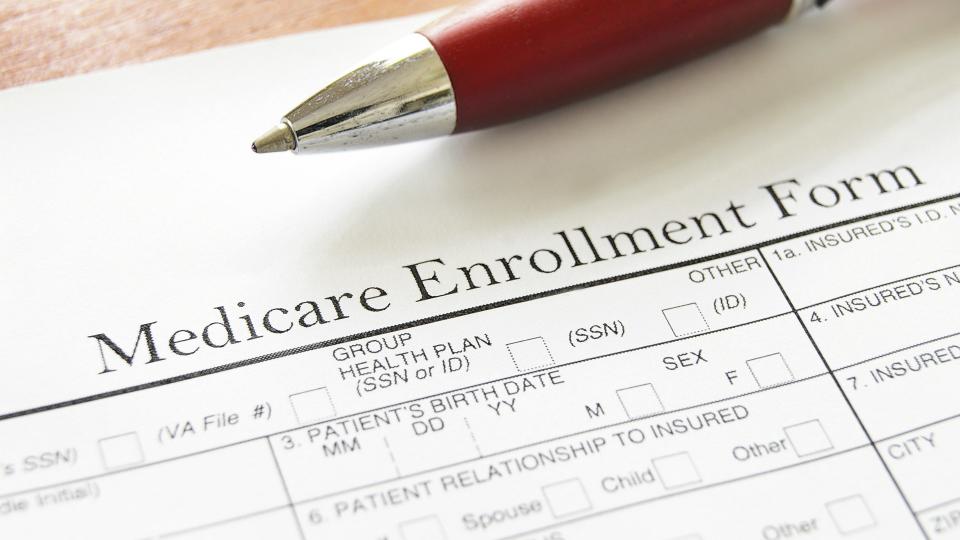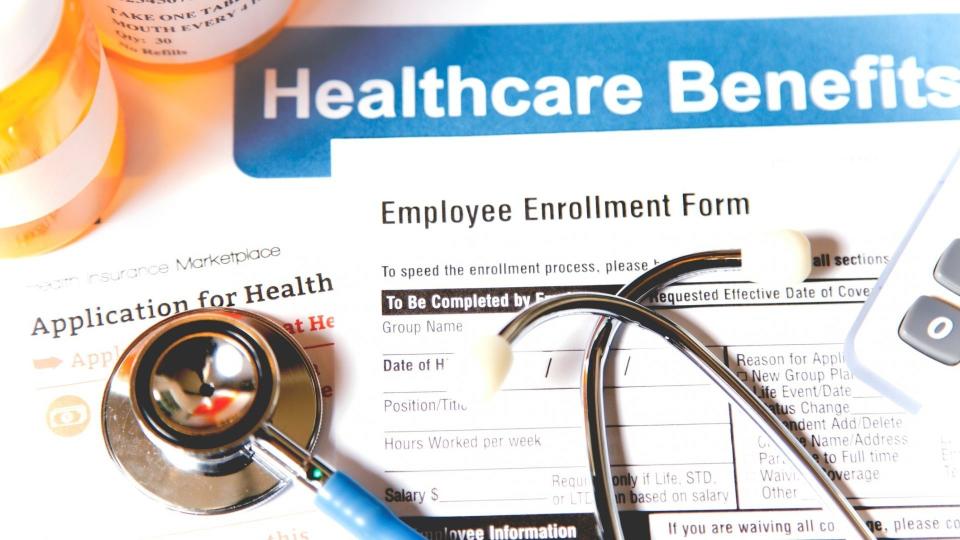10 Things To Check When You’re Enrolling in Health Insurance

Most people in the United States have health insurance. According to the latest data from the National Health Interview Survey, which took place from January to June 2020, over 90% of all persons — children under age 18, adults ages 18-64 and adults 65 and older — were insured.
Read: These States Have the Cheapest Healthcare Costs
And if you are looking to enroll in health insurance, you’re in luck. In mid-February, President Joe Biden announced that the government was opening a special enrollment period on Healthcare.gov through May 15 to give all Americans the opportunity to enroll in a healthcare plan. In March, the president extended the deadline through Aug. 15. The enrollment period for the Affordable Care Act is usually only open for about six weeks each year — from Nov. 1 to Dec. 15. — although you can qualify for a Special Enrollment Period if you have a qualifying life event, like moving or having a child.
No matter what, you don’t want to enroll in a healthcare plan on a whim. Instead, know what you look for when you’re enrolling.
“It’s important to find an option that is unique to your specific needs,” said Patrick Quigley, CEO of Sidecar Health. “Because the industry itself is so opaque, finding transparency and understanding how your plan works will be a huge benefit in the long run. Be conscious of how limited your networks are and find out exactly what the terms of your coverage will be when it comes to deductibles and premiums. Educating yourself on these things in advance will mean fewer surprises down the road.”
Here are 10 things to check on when enrolling in a healthcare plan.
Last updated: April 14, 2021

The Four Categories of Healthcare Plans
If you sign up for a healthcare plan through Healthcare.gov, you’ll have a choice of four metal categories: platinum, gold, silver or bronze. But what do each of those levels mean? According to Healthcare.gov, the metal categories are based on how you and your plan divvy up the overall cost of your healthcare and have nothing to do with the quality of care you’ll receive.
Fran Majidi of SmartFinancial Insurance has some additional insight:
“As you may have guessed, the value of each of these metals is reflected in the depth of coverage and price of the health plans you’ll find in the marketplace,” she said. “This means that premiums for platinum healthcare plans will cost the most in monthly premiums, but they will also cover more of your healthcare needs, so you don’t pay as much out-of-pocket when you see doctors and specialists. You’ll also pay less for treatments and surgery. For bronze health plans, you pay very little monthly, but when you visit a doctor, you pay more than you would with a higher-tier plan. The difference between the value of each tier is important to keep in mind when you choose your health plan. Otherwise, you may not be making the best decisions that result in savings …”
See: 10 Companies That Offer Health Insurance to Part-Time Employees

Care Needs
Which plan level you choose depends on your care needs. “As you can see, it makes sense for a young, healthy person who does not see a doctor more than maybe once a year to buy the bronze plan,” Majidi said. “Of course, there are sometimes unforeseen circumstances, like a sudden illness or accident, that may require more doctor’s visits and possibly a hospital stay, which would end up being very costly if you’re paying 40% of the cost yourself. For this reason, even the healthiest young person who doesn’t have an emergency fund may be better off with a silver plan (paying 30% of costs) or even gold (paying about 20% of costs). In the end, it’s your choice to take as much risk as you want to.”
So how do you choose? “Choosing which level of protection you need is a personal decision that should be made based on lifestyle and health,” Majidi said. “If you’re not sure what’s right for you, think about how often you visited a doctor last year. If it was one or two times, chances are you’d be wasting money on a platinum plan, but if on the off-chance that you became gravely ill or had a debilitating accident, you would be saving lots of money. Makes sense, right? The trick is to feel out where your risk level falls in this tier system.”
Find Out: 20 Highest- and Lowest-Paying Jobs in Healthcare

Benefit Design
Not only do you need to check on the levels of plans and how well each plan level would meet your care needs, but you also should check on benefit design. In the Affordable Care Act marketplace, the most common benefit designs are health maintenance organization, exclusive provider organization and preferred provider organization — also known as HMOs, EPOs and PPOs, respectively. It’s important to note that HMOs and EPOs do not pay for care you receive outside of your provider network. In contrast, while PPOs are generally more expensive, they do not require referrals to see a specialist. Additionally, PPOs do allow covered out-of-network care, although it will likely be at a higher price than in-network care.
More: What Is an HSA and Why Do You Need One?

Coverage
Insurance plans under the Affordable Care Act are required to provide these 10 benefits at a minimum, according to Healthcare.gov:
Outpatient care
Emergency services
Hospitalization
Pregnancy, maternity and newborn care
Mental health and substance abuse services, including counseling and psychotherapy
Prescription drugs
Rehabilitative and habilitative services and devices
Labwork
Preventive and wellness services, including chronic disease management
Dental and vision care for children
If you need additional benefits, the best way to determine which plan will best meet your healthcare needs is to visit Healthcare.gov and compare available plans.
Read: Best and Worst States for Healthcare Costs

Whether Your Doctors Are Considered 'In-Network'
If you have specific doctors who you like to see for your healthcare needs, know that not all healthcare plans will allow you to see the doctor of your choice. What it really boils down to is whether the doctor is in a healthcare plan’s network or not.
“Some plans, like HMOs and PPOs, only allow you to visit a certain group of doctors,” said Alex Kronk of My Health Plan Critic. “If you have a strong relationship with your doctor, it will be important to make sure they are in-network. If they are out-of-network, you will pay much more for visiting your doctor.”
See: The Cost of Health Insurance the Year You Were Born

ACA Healthcare Plan Average Premiums
According to a 2020 report issued by eHealth, ACA Index Report on Unsubsidized Consumers in the 2020 Open Enrollment Period, most people enrolled in ACA health plans receive government subsidies to help defray the costs of healthcare and pay an average of $80 per month in premiums.
However, people who are not eligible for subsidies pay a much higher cost. Here’s a breakdown of the average premiums for individuals in 2020 from the report:
Platinum plan: $732 per month, up 4% from 2019
Gold plan: $569 per month, up 5% from 2019
Silver plan: $483 per month, essentially unchanged from 2019
Bronze plan: $448 per month, up 2% from 2019
Here’s a breakdown of the average premiums for families in 2020 from the report:
Platinum plan: $1,610 per month, up 10% from 2019
Gold plan: $1,437 per month, up 1% from 2019
Silver plan: $1,212 per month, up 3% from 2019
Bronze plan: $1,431 per month, up 4% from 2019
Find Out: 10 Cheap Ways To Better Your Health

ACA Healthcare Plan Average Deductibles
The average annual healthcare plan deductible for individuals in 2020 was $4,364, which is a slight 1% increase from the deductible amount in 2019, according to the eHealth report. From 2018 to 2019, however, average deductibles for individuals dipped from $4,578 to $4,320.
The average annual healthcare plan deductible for families in 2020 increased by 5% from the year before, from $8,071 to $8,439, according to the report. From 2018 to 2019, there was a significant drop in average deductibles for individuals from $8,803 to $8,071.
More: Medical Expenses You Can Deduct From Your Taxes

Conditions of the Special Enrollment Period
If you need to enroll in healthcare outside of the normal enrollment period that occurs Nov. 1 through Dec. 15 in most states each year, you can if you meet the conditions of the Special Enrollment Period. The condition must have occurred in the past 60 days.
Marriage
Had a baby, adopted a child or placed a child for foster care
Divorced or legally separated and lost health insurance
A death that makes you no longer eligible for your current health plan.
Change in residence
Loss of health insurance
Becoming a member of a federally recognized tribe or status as an Alaska Native Claims Settlement Act
Becoming a corporation shareholder
Becoming a U.S. citizen
Leaving incarceration
Beginning or ending service in AmeriCorps State and National, VISTA or NCCC
Read: COVID-19 Is Changing How (and Whether) We Take Care of Ourselves

Penalties for Not Having Health Insurance
For healthcare plans through 2018, consumers were penalized by the federal government come tax time for not having health insurance. While this federal mandate is no longer in effect, some states have their own health insurance mandates. These states are California, District of Columbia, Massachusetts, New Jersey, Rhode Island and Vermont. If you live in one of these states, you may have to pay a fine if you don’t maintain health insurance coverage.
See: Most and Least Expensive States for Retiree Healthcare Costs

Whether Paying in Cash Could Save You Money
If you have a healthcare plan that considers your doctor out-of-network or you need to get a more in-depth exam than what can be done in one visit to your provider, consider paying cash for the visit or procedure instead of going through your insurance.
“Always explore if you can save money by paying in cash,” said Quigley of Sidecar Health. “My a-ha moment came to me when I needed an MRI and ended up paying $1,300 out of pocket due to a high deductible plan. Afterward, when I needed a second MRI, I asked the doctor how much it would be if I paid in cash. You can imagine my surprise when I was told it would be $330. Same doctor, same hospital, same procedure. That’s when I realized that having the freedom to shop around for healthcare and cutting out the insurance middleman brings transparency to an otherwise opaque healthcare system …”
More From GOBankingRates
This article originally appeared on GOBankingRates.com: 10 Things To Check When You’re Enrolling in Health Insurance

 Yahoo Finance
Yahoo Finance 